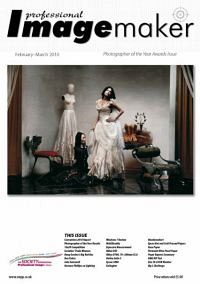articles/Paper/endofterm-page2
Great Paper End of Term Report - part 2 of 1 2 3 4 5 6 7 8 9
by Mike McNamee Published 01/02/2010
We have continued to report our errors as both Lab values and ΔE₀₀ values and so some explanation is timely. The Lab error measurement is a moderately simple calculation of the distance between two colours which lie in threedimensional space. If you imagine that the colour gamut is represented as the space of your living room and there are two people in the room: the position of the person on the floor defines the colour values ( a and b of Lab colour) and the height of their head above the floor defines how light or dark that colour is - black if the head is on the floor, white if it is up against the ceiling. If there are two people in the room, one sitting on the floor and one standing on a chair then their colour values will be different, they are in different parts of the room and the height difference between their heads will be the difference in their lightness values. The Lab colour difference between the two people's heads will be the length of a piece of string stretched from one head to the other.
Lab error has served us well for many years and was attractive because the calculation was simple to perform. However, the problem with Lab is that this notional length of string represents bigger visual colour differences in different parts of the room. In essence a two-foot string in the middle of the room will look longer than that same piece of string in the corners of the room. We say that the colour space is 'not perceptually uniform'. To overcome this deficiency, a number of mathematical fudges has been proposed over the years which are arranged to bias the error calculation so that it is more meaningful to what the average eye perceives as a colour difference. The latest of these methods is called Delta E 2000 and is more formally written ΔE₀₀. At Professional Imagemaker, we adopted ΔE₀₀ faster than most, but there is still a mix of units in common usage. Our intention is to move more towards using ΔE₀₀ when we can, the only thing that stops us sometimes is the difficulty of writing out the equations in Excel spreadsheets - we can do Lab equations from memory, but not ΔE₀₀.
At the same time as shifting more towards ΔE₀₀ we are also changing our measurement methods a little. The X-Rite Eye 1 (formerly GretagMacbeth Eye 1) has become the de facto standard for 'shop floor' use for both profiling, certifying proofs and contract proofing. We have switched away from using our Digital Swatchbook partly because comparison of our DTP 41 automatic spectro and our Eye 1 show them to be very close but the Swatchbook has drifted out of calibration (and will cost a fortune to fettle!). Retiring the Swatchbook took with it our ability to measure Metameric Index with one click and so we have purchased BabelColor to link with the Eye 1. At the same time we have decided to tidy up an anomaly in the way we have been reporting metamerism and switch to reporting the more technically correct Colour Inconstancy Index (CII) (see the call-out box).
Please Note:
There is more than one page for this Article.
You are currently on page 2
- Great Paper End of Term Report page 1
- Great Paper End of Term Report page 2
- Great Paper End of Term Report page 3
- Great Paper End of Term Report page 4
- Great Paper End of Term Report page 5
- Great Paper End of Term Report page 6
- Great Paper End of Term Report page 7
- Great Paper End of Term Report page 8
- Great Paper End of Term Report page 9
1st Published 01/02/2010
last update 09/12/2022 14:53:49
More Paper Articles
There are 36 days to get ready for The Society of Photographers Convention and Trade Show at The Novotel London West, Hammersmith ...
which starts on Wednesday 14th January 2026





